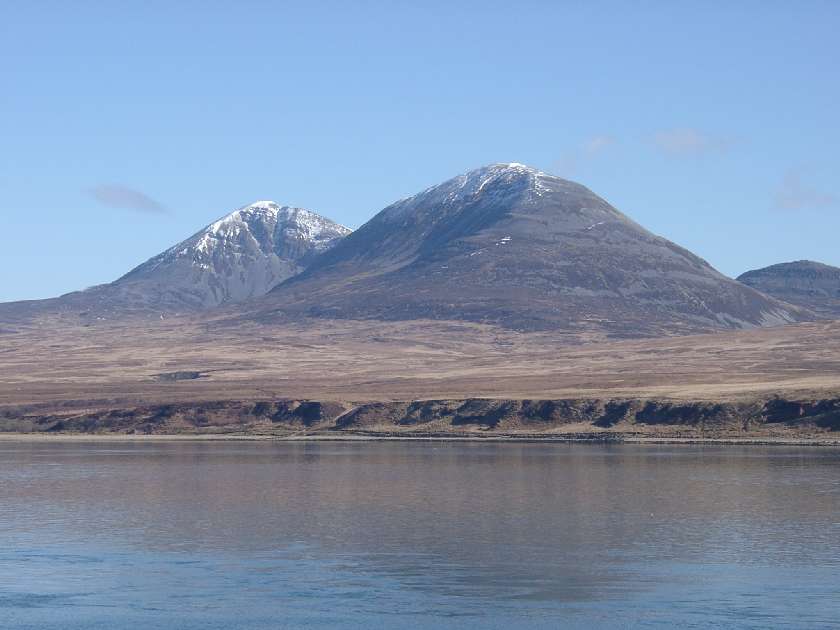My characters (or rather my current set of characters) live in the Viking controlled Hebrides during the mid-9th century. This is when the expansion of the Vikings really took hold. It is when Norway, in particular, became unified, pushing many warriors out of their homelands. It is when the Vikings went and settled in Britain, and France as well as colonising Iceland. Because they did not use the Latin alphabet and were not as literate as the monks they were terrorising, we tend to a skewed view of the Vikings.
 |
| The Hebrides from wikicommons |
The Western Isles which includes Islay were part of the Dal
Riata confederation and closely allied to Ireland at this point. To make things really confusing – the word
Scot in this time period means someone from the Western Isles and Northern
Ireland. Until Kenneth McAlpine kills
most of the Pict hierarchy at supper, and founds Alba, there isn’t really a
Scotland. It isn’t until his grandsons become king that the word Scotland is
used in the modern context.
 |
| Islay |
While Kenneth McAlpin was causing turmoil on the mainland,
the Vikings as they so often did in this period took full advantage and
captured territory – namely Shetland, Orkney, and the Western Isles or Hebrides
as well as the Isle of Man and parts of the west which are now referred to
Galloway. Galloway means the foreign Gaels. The area around Man and the Hebrides is often
referred to as the Kingdom of the Isles. The kingdom of the Isles dates roughly
from the mid-ninth century until it is broken up in the 13th
century. It is sometimes referred to as the Southern Isles as the Northern
Isles of Shetland Orkney were often under different rulers.
We know under the Vikings the Hebrides were ruled from the Isle
of Man. The overlord of the King of Mann varied quite a bit. Sometimes it was
Norway, others it was England, the Orkneys, Ireland or Scotland. But go to Islay or Jura today and little
besides place-names remain from that time. The Islay museum has only a few
relics.
The references are often very shadowy as with much of Viking
history. Because most of their structures were wood, little remains. Some
archaeology has been done but because sites often had multiple uses over the
period sometimes it can be very inconclusive. It is assumed that the buildings
were similar in style to those found in Norway and Iceland. They were built
around the idea of a great hall with other smaller buildings and workshops
supporting the great hall.
 |
| The paps of Jura |
It was a clash of two cultures in many ways. The Gaels had
been Christian since St Columba in the fifth century. They had their own
traditions such as the Celtic stone crosses and artwork. The Vikings were raiders
and merchants. They were pagans and their traditions were markedly different. However the Vikings were mainly men and they
did tend to intermarry with the Gaels. These foreign Gaels or Gall-Ghaeil tended to be Christian and
follow the traditions of their mothers. But they also followed the profession
of their fathers and became great seafarers and warriors.
| A Celtic cross |
To understand this time, you need to think in terms
of sea roads and trade, rather than land travel. It wasn’t horses on roads so
much as ships. Summer was the season for warfare. A farm planted his crop in
the spring, and left his wife and slaves to tend it while he went to war during
the summer. He would then return in time for the harvest and would over-winter
on his land. In fact the 12th century warrior Somerlad, who is credited
with driving the Vkings out of the Western Isles and founding the Clan Donald
is a corruption of a Norse name meaning summer warrior or Viking. He was not
some Gaellic hero but the product of the Norse-Gael ruling culture. He simply
was able to wrest control of the Isles from the King of Man and became the
self-styled Lord of the Isles. In short the Vikings did not leave the Western
Isles but became part of the fabric of the society. They settled and adapted to
their new homeland.
So my characters lived in a time of flux. When a man
could carve a kingdom with the point of his sword and his sons could lose it
just as quickly. They would have recognised the mountains and hills of Islay
and Jura but little else.
Michelle Styles writes warm, witty and intimate historical romances. SHe is currently revising her next Viking set romance which is set in Islay. Her most recent Viking Summer of the Viking was published in the US and England in June 2015. It will also be published in Norway and Sweden in June 2016 and France. You can learn more about Michelle and her books on www.michellestyles.co.uk

